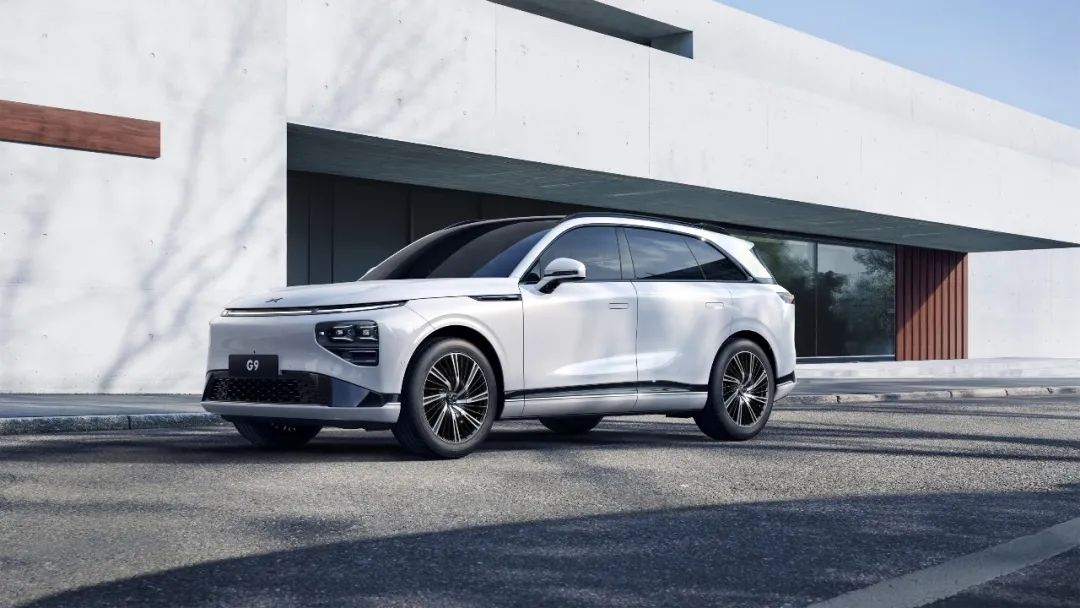Author: Turbocharged Fatty
If the new forces’ battle a few years ago was “survival of the fittest,” then the new battlefield in recent years must be “who can live better.”
With the increasing number of “smart electric cars” in the current market, competition is becoming increasingly fierce. It’s not easy to win your own “cake” in the midst of it all.

Tonight, the XPeng G9 officially launches, offering six models, including three range versions of 570km, 650km, and 702km under CLTC conditions. The price range is from 309,900 to 469,900 yuan and will begin formal delivery at the end of October 2022.

So, let’s take a look at XPeng G9, which XPeng Motors calls “the best SUV under CNY 500,000,” starting with its core information:

Let’s start with the car
The XPeng G9’s body dimensions are 4891mm in length, 1937mm in width, 1680mm in height, and 2998mm in wheelbase. It is positioned as a large pure-electric SUV.
Let’s take a look at how it compares to other models:

Compared with these several large new energy SUVs, the differences in the various dimensions aren’t particularly noticeable, and the differences in more of the data are somewhat related to the car’s external accessories. Furthermore, the XPeng G9 has good wheelbase performance.

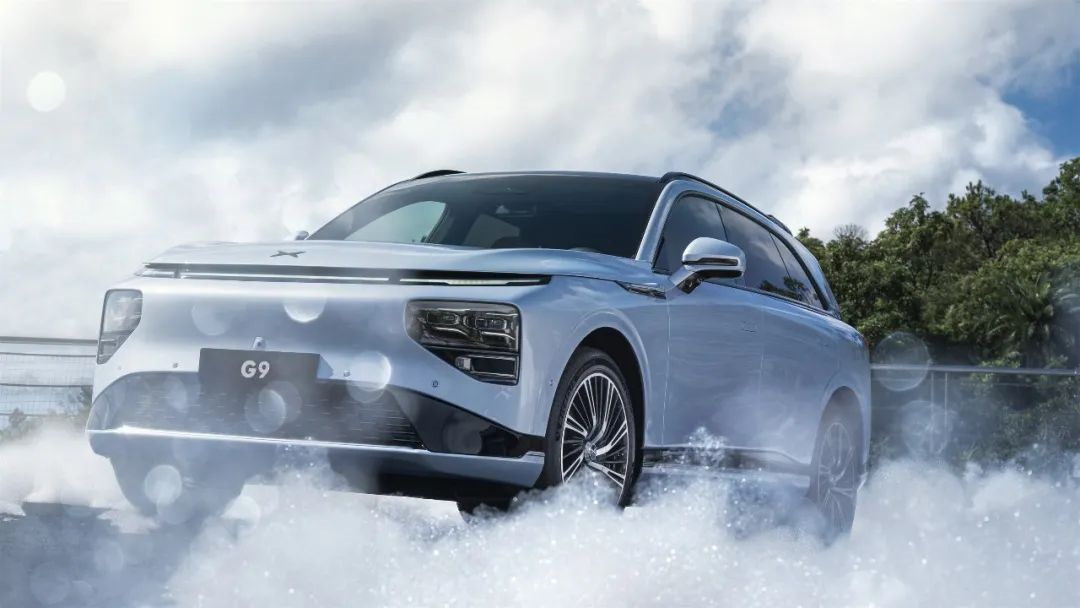 # Small G9
# Small G9
小鹏 G9 uses the family-style X Robot Face. As for aesthetics, “each to his own.” However, I think the design of the G9 is quite practical, without excessive publicity, and it still follows a simple style.


Small G9 does not carry scene attributes such as “family” or “dads,” and thus it does not have a six- or seven-seat layout like other models. Instead, it was directly designed as a “large 5-seater” model to meet the needs of multiple people traveling while also providing more substantial trunk capacity for storage.

The vehicle’s seats are entirely made of high polymer filling materials with double vertical hardness. The driver and front passenger seats are equipped with electric thigh support, heating, massage, ventilation, and an active system, while the back seat has electric thigh support, heating, massage, and 27-37 degree electric backrest adjustment.
Small G9’s back seat employs the “luxury sofa” design concept, with the thickest part of the back seat reaching 270mm, and the backrest can tilt back 10 degrees. The seat cushion length has also reached 500 millimeters. At the same time, the back seat is also equipped with an “elephant trunk”-style electric leg rest, with an additional 50mm of extension, improving the comfort for long-distance travel in the back seat.

In terms of driving scenarios, Small G9 is also equipped with two sleep modes and “One-Click Bed” function.

In terms of performance, Small G9’s four-wheel drive version has a total power of 405kW, a maximum torque of 717N·m, and can achieve a 0-100 km/h acceleration performance of 3.9 seconds. The rear-wheel drive version has a single motor with a maximum power of 230kW, a maximum torque of 430N·m, and a 0-100 km/h acceleration performance of 6.4 seconds.Translate the following Markdown text in Chinese to English Markdown text:


Meanwhile, the XPeng G9 is equipped with front double wishbone/rear multi-link independent suspension. The four-wheel-drive version is equipped with a dual-chamber air suspension and electromagnetic active shock absorbers.

The dual-chamber air suspension combined with electromagnetic active damping can quickly increase the suspension stiffness during fast lane changes and large turns, providing better support to reduce the body's roll during pitching and steering. The dual-chamber air suspension has an adjustable stroke of plus/minus 50mm, with 5 modes for adjustment as well as intelligent guest-welcoming, specific location memory, and voice control.

## 800V is the Star of G9
Actually, I think the star of the XPeng G9 is this part, because this is also the most propagated content after XPeng G9 announced to use the 800V high-voltage platform, so let's talk about it first.

The XPeng G9 is equipped with the XPOWER 3.0 power system, with a maximum battery capacity of 98kWh and an 800V high-voltage platform. When charged from 10% to 80% SOC on a 480KW S4 ultra-fast charging pile:
- The 4C version only takes 15 minutes;
- The 3C version takes no more than 20 minutes.

Even when at XPeng's 180kW S2 supercharging pile or third-party fast charging pile, the 800V high-voltage platform mounted on G9 can significantly improve the charging efficiency.
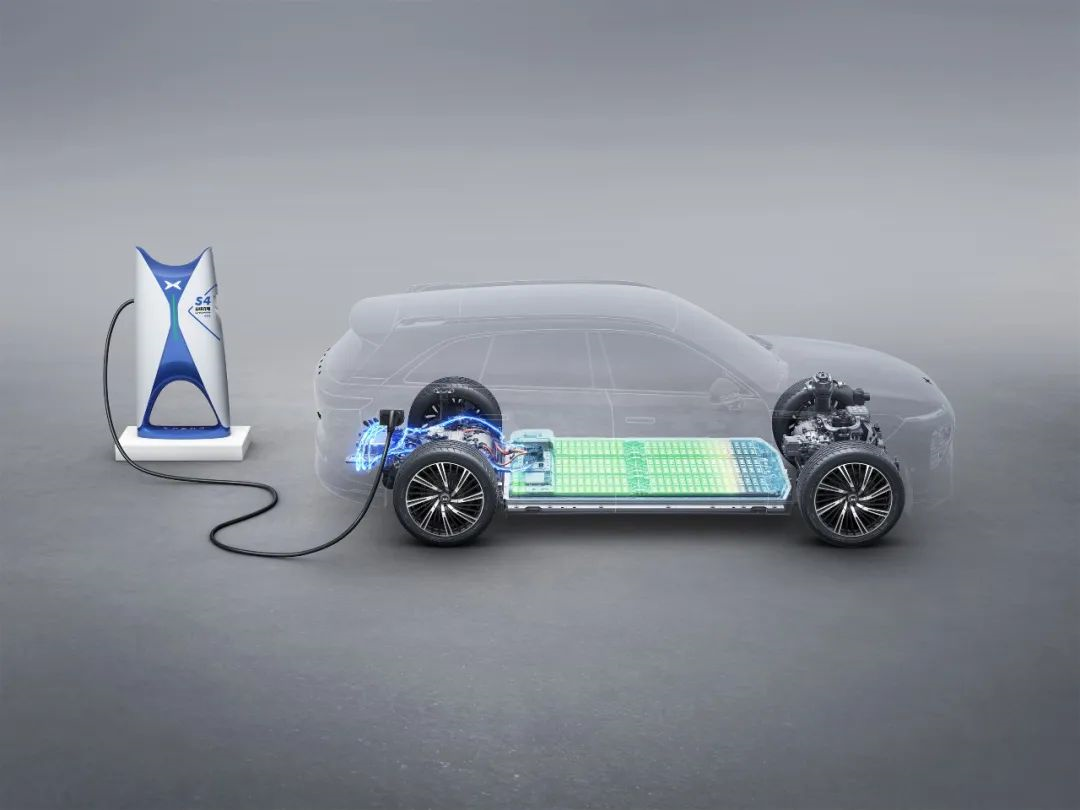
Compared with a few years ago, the endurance of electric vehicles has been greatly improved nowadays. The mainstream endurance range is already sufficient for the basic travel needs of the vast majority of users, whether it is daily commuting, short-distance travel and so on. Now, more and more host factories are starting to make efforts in the field of energy supplementation, whether it is energy supplementation networks or energy supplementation technologies.
In order to improve the charging power of electric vehicles, there are currently two directions: one is to increase the charging current, and the other is to increase the charging voltage. The principle is the formula learned in high school physics: P=U*I.
There is a problem in these two solutions: increasing the current will inevitably increase heating, which brings us to Joule’s law Q=I²Rt. Therefore, increasing the current must have strong heat management capabilities, and Tesla’s V3 supercharging pile in the new energy vehicle has chosen the solution of increasing the current as a result.

Therefore, if a technological breakthrough cannot be achieved in heat management, the only option is to choose the solution of increasing the voltage, in other words, increasing the voltage is also the most secure solution. For this reason, the 800V high-voltage platform has also become the development direction chosen by many host factories and suppliers.
If electric vehicles equipped with an 800V high-voltage platform want to achieve the maximum experience, they must have the cooperation of ultra-fast charging stations. As for the construction of an ultra-fast charging network for XPeng Motors, the plan is as follows:
-
By the end of 2022, XPeng Motors will have more than 50 S4 super-fast charging stations put into operation in core cities across the country;
-
By the end of 2023, XPeng Motors plans to cover at least 500 S4 super-fast charging stations in key cities across the country;
-
In 2025, XPeng Motors’ goal is to build a total of 2,000 super-fast charging stations.

According to the information currently available, the XPeng G9 may provide three versions of electric cores, including two 3C and 4C lithium ternary core models with charging and discharging rates, and a lithium iron phosphate core model.
 Only the peak charging power of the 4C version can reach around 430 kW, enabling “5-minute charging for 200 km driving” with the XPeng S4 super fast charger. The peak charging power of the 3C version is about 300 kW, which can also provide 130+ km of range with a 5-minute charge.
Only the peak charging power of the 4C version can reach around 430 kW, enabling “5-minute charging for 200 km driving” with the XPeng S4 super fast charger. The peak charging power of the 3C version is about 300 kW, which can also provide 130+ km of range with a 5-minute charge.
However, XPeng has not released the energy replenishment data for the iron-lithium phosphate version at present.

XPeng G9’s battery cell suppliers include CATL, SVOLT, and EVE. Currently, in the application information of the Ministry of Industry and Information Technology, XPeng G9’s models with CATL and SVOLT battery cells appear, and the versions with EVE battery cells have not been reported.
The battery cells of the XPeng G9 4C version are provided by EVE, so “probably” XPeng G9’s models to be delivered this year will be the iron-lithium phosphate version and the 3C version, while the 4C version is likely to be delayed until next year.
More Than 3D, and Also 5D
XPeng G9 adopts the new X-EEA 3.0 electronic and electrical architecture, which is no longer divided into domain control, but adopts a high-fusion hardware architecture of central supercomputing + regional control.
This electronic and electrical architecture can not only carry higher-performance chips and support higher-level intelligent assisted driving and stronger intelligent cockpits but also better meet the realization of some cross-domain functions.

Well, let’s start with the cockpit.
This time, the cockpit discussion will mainly start from two aspects: interaction and scenario.
The XPeng G9’s cockpit has a total of three screens, including a 10.25-inch full LCD dashboard and dual 14.96-inch 2K central control copilot dual screens.

The design of the dual screens appears to be very similar to that of the Li Xiang ONE, and the two models both use a standard aspect ratio on the dual screens, providing good video playback experiences.
The 3D human-machine interaction system of XPeng G9 is developed based on Unity engine technology, which can render 3D maps in real-time and provide wider and more detailed SR environment simulation display. It can also control the detailed status of the vehicle, such as windows and suspension, through visualization.
In addition to the interaction of intelligent cockpit, the application of 3D human-machine interaction system is also a technology embedded for the visualization of intelligent driving.

XPeng G9 also provides lane-level navigation, which can provide precise navigation based on lane-level positioning on highways and some urban expressways. It can locate lanes and vehicles in real-time and present them through 3D scenes as well as voice assistant reports. In addition, XPeng cooperates with Amap to provide intelligent charging route planning and dynamic recommendation of intelligent charging stations during driving.
At this year’s Chengdu Auto Show, I also briefly experienced the cabin of XPeng G9. Interested friends can watch this video:
However, many functions were not experienced due to the car’s operating system version and poor network signal in the exhibition hall. For example, XPeng G9 is equipped with full-scene voice 2.0 and 5D cinema.
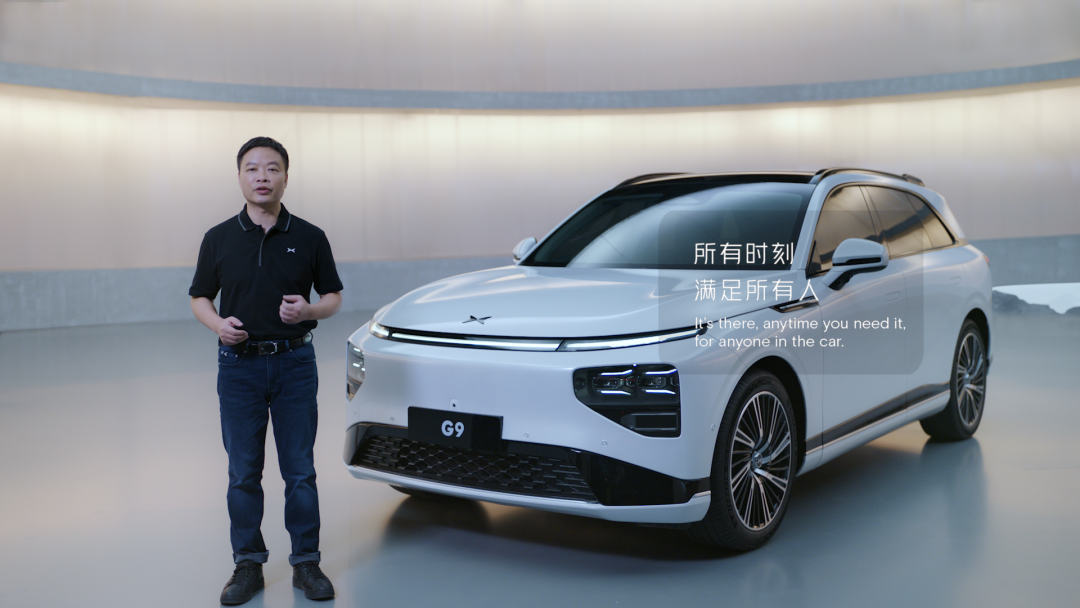
Full-scene voice 2.0 optimizes the local function of voice. In the situation of no network connection or poor network signal, more than 600 vehicle functions can be interacted with by using “Xiao P” through voice interaction. With the integration of voice and cloud, the response speed of voice interaction has also been improved.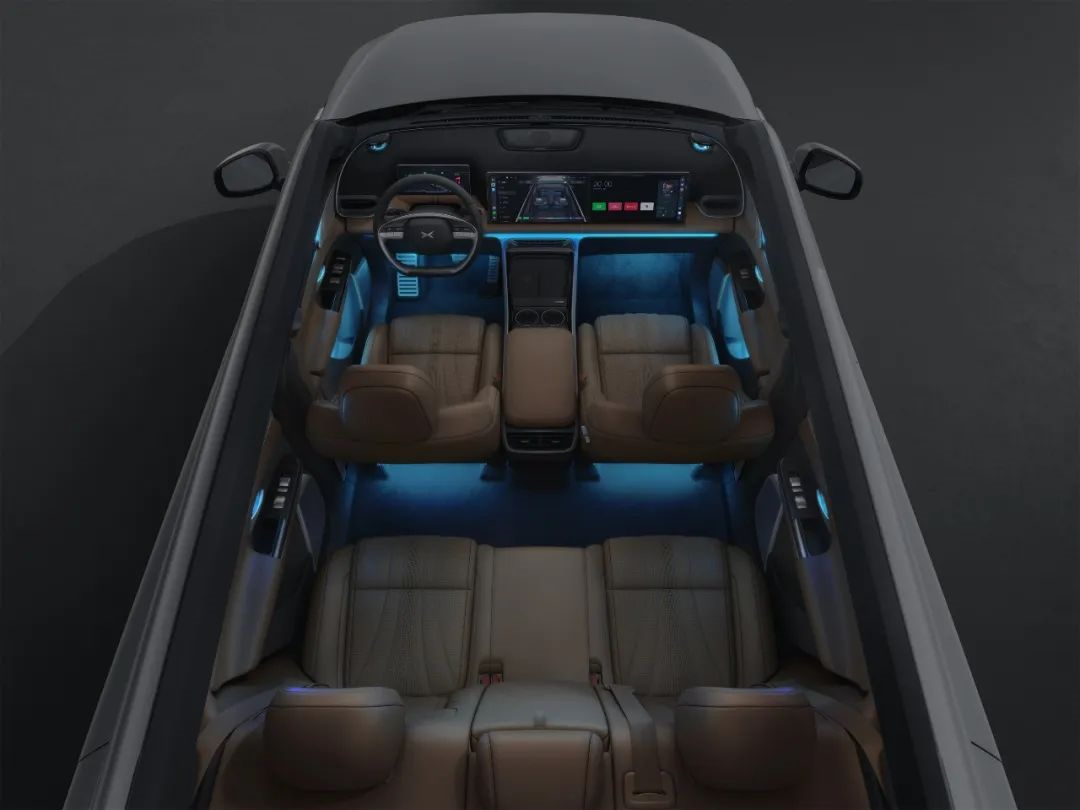
With the support of Full-Scene Voice 2.0, Little P can also:
-
Issue voice commands from different locations in the car without having to wake up repeatedly;
-
Identify commands that are continuously inherited between different members;
-
Have up to 4 command requests in a single interaction;
-
Respond to interactive requests from different locations with directional cues via the driver’s main speaker, the passenger’s Bluetooth headset, and the audio system.
At the same time, Little Xpeng G9 also applies MIMO communication technology to the voice system, allowing four people in the car to issue commands simultaneously and execute them in parallel.


The 5D music cockpit of Little Xpeng G9 contains 28 acoustic units with a total power of 2,250W, including 18 original Denon Confidence premium audio system speakers. It supports high-quality 7.1.4 sound effects and applies Dolby Atmos to a variety of scenarios.

The entire audio system is tuned by Beijing Olympics opening and closing ceremony sound engineer Jin Shaogang and the Denon factory tuning team, and Little Xpeng G9 also comes with three sets of theme sound effects tailored by Joe Hisaishi, such as prompt sounds and radar sounds.

Full-Scene is What Makes Intelligent Driving
Of the six models of Little Xpeng G9, only the X-model comes standard with Little Xpeng’s second-generation intelligent advanced driving system XNGP.
 The XNGP assisted driving system’s computing platform uses dual NVIDIA Orin chips with a total computing power of 508 TOPS. The perception system carries 31 perception hardware devices, including:
The XNGP assisted driving system’s computing platform uses dual NVIDIA Orin chips with a total computing power of 508 TOPS. The perception system carries 31 perception hardware devices, including:
-
Two LiDARs;
-
Five millimeter-wave radars;
-
Twelve ultrasonic sensors;
-
Twelve cameras.

Two LiDARs are installed below the front headlight module, similar to the positioning of the P5. The dual LiDARs can cover a 180° horizontal field of view in front of the vehicle, which is larger than the single LiDAR with a 120° field of view and has a smaller blind zone angle.

However, while P5 uses LiDARs from Livox, G9 chooses the higher performance SensingTech M1 because higher-performing intelligence is required in G9’s future driving scenarios, and XNGP is heavily dependent on perception and cannot rely on high-precision maps.

Previously, when XPeng Motors released the City NGP, it announced XPILOT 4.0, the intelligent assisted driving system that XPeng G9 is equipped with, which is a full-scene intelligent assisted driving system.

The ultimate form of the XNGP intelligent assisted driving system is “end-to-end full-scene intelligent assisted driving”, which will cover all kinds of daily driving scenarios such as high-speed, urban expressways/main roads/secondary roads, internal roads in parks, and parking lots, and will also connect to special scenarios such as highway toll collection stations and parking lot barriers.
According to XPeng Motors’ plan:
-
By 2023, most cities will gradually achieve full-scene intelligent assisted driving capabilities and gradually achieve functional coverage in areas without high-precision maps;
-
By 2024, driving and parking functions will be gradually connected to form a complete point-to-point intelligent navigation assisted driving system.
So, let’s analyze?
Next, let’s analyze the configuration of XPeng G9.The XPeng G9 offers three optional packages: the 5D Music Cabin package (22,000 yuan), XNGP Advanced Driver Assistance package (28,000 yuan), and the 4C Super Fast Charging Battery pack (10,000 yuan).
Let’s take a look at this price and configuration chart first:

So here are a few points to note:
-
Only the four-wheel-drive version is equipped with a double-chamber air spring.
-
The X version car model only comes with the 5D Music Cabin and XNGP Advanced Driver Assistance package as standard.
-
Only the 650 X model can choose to install the 4C Super Fast Charging Battery pack.
-
The lowest configuration 570 G model does not provide any optional packages.
-
The second lowest configuration 570 E model only offers the 5D Music Cabin package.
-
The 702 E model can choose to install the 5D Music Cabin and XNGP Advanced Driver Assistance package, either individually or both.
-
The 650 E model can only choose between the 5D Music Cabin and XNGP Advanced Driver Assistance package (because if you choose both, you might as well buy the 650 X directly).
After reading all these requirements, one will find that these powerful technologies are only available as standard in the top-end model, and the 4C version is only available as an option for the 650 X model, so XPeng Auto seems to be conveying a point:
“Introducing the Super Fast Charging of the 4C battery proves that I have this technology. But… I promote the 3C battery.”
Let’s do some simple calculations. Take the three models of XPeng G9 that may be the best sellers in the future:
-
The 570 E is priced at 329,900 yuan: the price after choosing the 5D Music Cabin package is 351,900 yuan.- 702E priced at CNY 3.499 million: with the option of 5D Music Cabin, the price becomes CNY 3.719 million. With the option of XNGP assistance driving, the price becomes CNY 3.779 million, and with both options, the price becomes CNY 3.999 million.
-
650E priced at CNY 3.999 million: with the option of 5D Music Cabin, the price becomes CNY 4.219 million, and with the option of XNGP assistance driving, the price becomes CNY 4.279 million.

In summary:
-
The lowest price to experience 5D Music Cabin is CNY 3.519 million.
-
The lowest price to experience XNGP assistance driving is CNY 3.779 million.
-
The lowest price for users who wish to experience both is CNY 3.999 million.
-
The lowest price to experience the double-chamber suspension is also CNY 3.999 million.
Initially, the starting price of CNY 3.099 million for the small and medium-sized pure electric SUV XPeng G9 seemed sincere, but after calculating the price with options…
As a member of a XPeng G9 pre-order group, I have seen the feedback from users:

Finally
Nowadays, the internal competition of intelligent electric vehicles has prompted manufacturers to seek breakthroughs through unique scene definitions, technology that competes with some luxury brands, and hardware preparations for the popularization of future technology…

These realities have shown us that electric vehicles are becoming more and more intelligent, and XPeng G9 is one of them. To be honest, after watching today’s entire launch event, XPeng G9’s product strength in intelligent driving, intelligent cabin, energy supplements, and other aspects is indeed impressive.
However, even with XPeng G9’s biggest highlight, the 800 high-voltage platform, I have my own views:
At least for now, 480kW charging power does not provide substantial improvement in user experience in the short term, because more large-area ultra-fast charging piles are needed for popularization.>Moreover, it is crucial to have fast charging stations within your reach. Otherwise, you may have an improved experience at third-party charging stations or XPENG’s fast charging stations, but you won’t get the maximum experience.
In two years, when fast charging stations are widely available, more products may adopt the 800V high-voltage platform, as many automakers and suppliers that we know of are currently developing this technology. Perhaps, the cost of this technology will decrease by then.
Therefore, this might be the reason why although XPENG G9 has launched this technology and included fast charging station construction in its plan, it doesn’t promote this technology in its vehicle configuration.
Today, more and more brands are focusing on new energy technology, chassis technology, intelligent cabin, and autonomous driving, such as XPENG G9, the newly delivered LIXIANG L9, NIO ES7, AVETA 11 that three automotive giants joined together, AITO WENJIE M7, and so on.
Perhaps, a new battle has begun in the new energy market from this year.
This article is a translation by ChatGPT of a Chinese report from 42HOW. If you have any questions about it, please email bd@42how.com.
